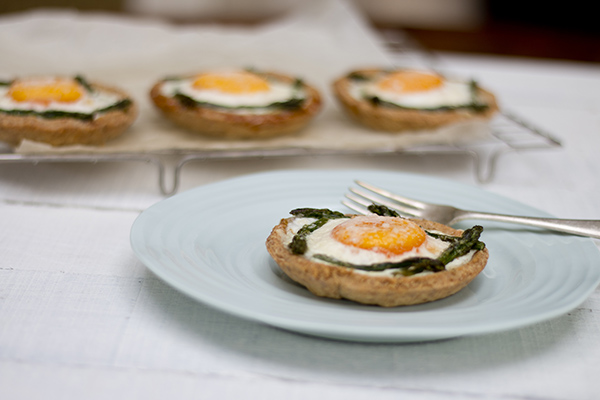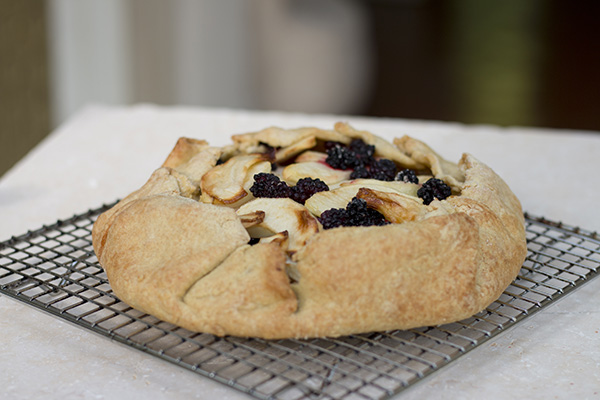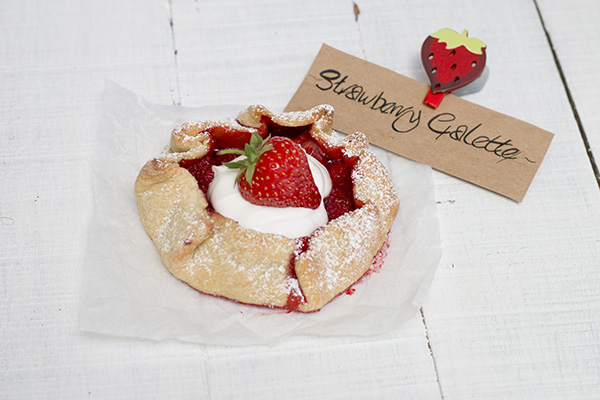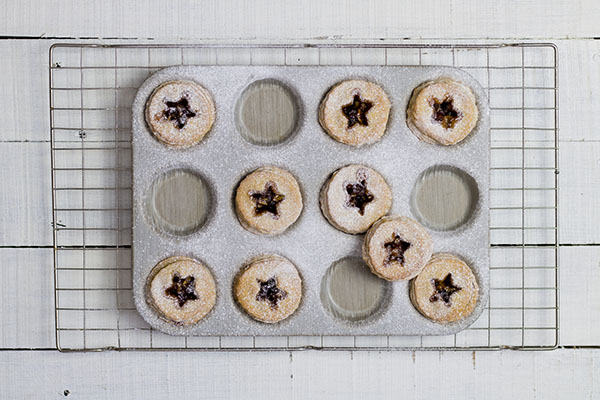Can you cook with cold pressed rapeseed oil? We get asked this question quite a lot, and the answer is simply YES. There is a lot of information about how some oils are only for drizzling or cooking at low temperatures and that some oils are meant for high temperature cooking, so let us explain the differences between the oils and what makes them suitable for high temperature cooking.
The way to tell if an oil is suitable for cooking with is to look at its smoke point. Smoke point is the temperature at which oil can be heated to before it starts to produce smoke. Once an oil goes above its smoke point, other than the unpleasant smoke that is created, the oil itself also starts to breakdown and the nutritional composition changes.
Different oils have different smoke points, below shows the smoke point of common cooking oils. This is a great way for you to choose the oil that you need for your cooking and which oil you may want for other uses, such as drizzling.

Smoke points of common cooking oils
Cold Pressed Rapeseed Oil – 230°C
Sunflower Oil – 225°C
Extra Virgin Olive Oil – 190°C
Coconut Oil – 175°C
Butter – 120°C-150°C

Typically, when roasting in an oven, your oil will get up to 180°C, so for roasting you need to ensure you choose an oil with a smoke point above this. For pan frying, you may reach up to 220°C and deep frying is typically around 180°C.
When choosing a cooking oil, you need to ensure that the smoke point is suitable for what you want to use it for. As well as smoke point, nutritional composition and flavour are also very important.

Farrington’s Mellow Yellow Cold Pressed Rapeseed Oil is an ideal all-round cooking oil. With a high smoke point of 230°C, you know that you can use it for all types of cooking. As well as the smoke point, our cold pressed rapeseed oil also has a lovely subtle, nutty flavour, which means it great for cooking all sorts of delicate ingredients such as fish and also adds a lovely nutty flavour when used a drizzle or pouring oil. In terms of nutrition, cold pressed rapeseed oil has half the saturated fat of olive oil and ten times less than coconut oil, it has the correct balance of Omega 3, 6 and 9 which is good for your health and it also contains Vitamin E and Vitamin K. For more information about the health benefits of cold pressed rapeseed oil, read our blog post here.

Delicious recipes to cook with cold pressed rapeseed oil
Now you know that you can cook with cold pressed rapeseed oil, here are our some of our favourite recipes to cook with cold pressed rapeseed oil that take advantage of the versatility of this brilliant oil…
Roast potatoes
By using Mellow Yellow Cold Pressed Rapeseed Oil, you can create a beautifully crunchy coating with a light and fluffy centre. Follow our Roast Potato recipe here.
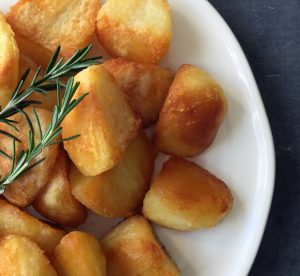
Stir Fry
Drizzle your oil into a hot wok and enjoy cooking a stir fry without creating lots of smoke. Find our Vegetable Stir Fry and Dipping Sauce recipe here.
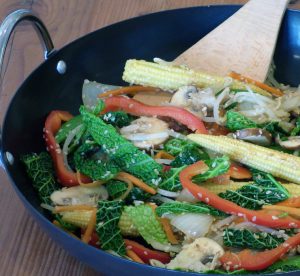
Crispy Baked Chicken Goujons
Mixed with panko breadcrumbs, the oil on the outside of these goujons gets super crispy in the oven without needing to deep fry! Find the recipe here.
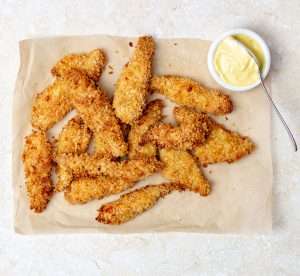
Raspberry & White Chocolate Granola Bars
The subtle, nutty flavour of cold pressed rapeseed oil is perfect in these simple and delicious granola bars. Recipe here.
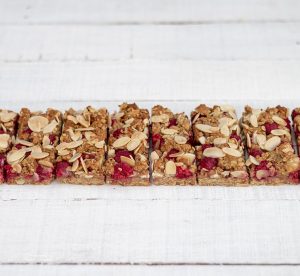
For more recipes, visit our Recipe page.
To find stockists of our Mellow Yellow Cold Pressed Rapeseed Oil, visit our Where to Buy page.
Did you know that making cakes with oil is just as easy and tasty as using butter? Well we have plenty of recipes for you to get started baking with oil.
One of the main benefits we find when making cakes with oil is that you no longer have to struggle to combine hard butter with sugar. Simply pour your oil into a mixing bowl with your sugar and mix, as the oil is a liquid you will find it so much easier and quicker to combine the two.
With a subtle nutty flavour, Mellow Yellow Cold Pressed Rapeseed Oil is great for making cakes as this nuttiness is very subtle but adds a wonderful depth of flavour to your bakes.
As well as being easier and with a delicious flavour, using Mellow Yellow for baking acts as a brilliant butter substitute so you can make vegan or dairy free cakes.
Our favourite recipes…
Courgettes make this tasty cake wonderfully moist. With a lime cream cheese frosting, the sweetness is perfectly balanced to create a cake that doesn’t feel heavy or too indulgent. Our recipe can be found here.
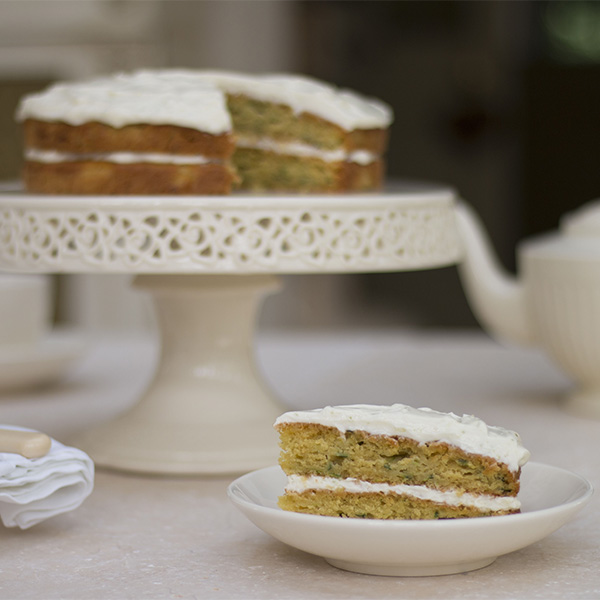
A seasonal delight and a refreshing change from rhubarb crumble. Almond and rhubarb join together in this delicious cake, an easy yet impressive bake to enjoy during the rhubarb season. Enjoy with a dollop of creme fraiche for a simple and delicious dessert, recipe here.
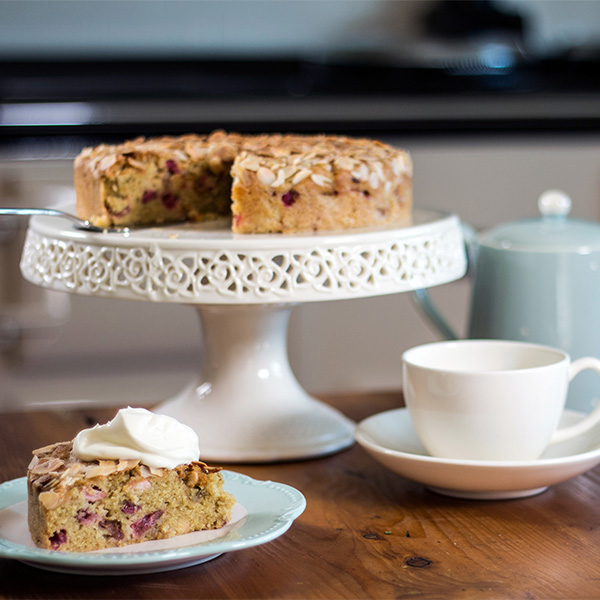
We love making delicate little apple roses to decorate this cake with. Thanks to the apple, this recipe creates a particularly moist cake that is wonderful enjoyed with a cup of tea. Fill with whipped cream for that extra indulgent touch!
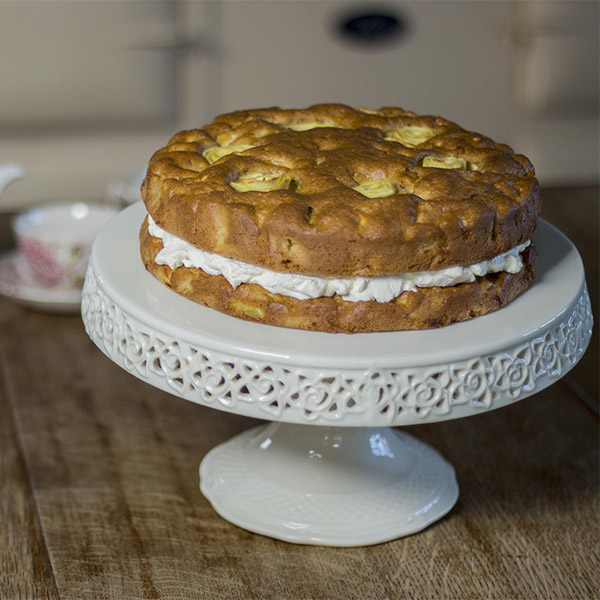
This recipe is made in one bowl to keep it super simple and reduce washing up. Use overripe bananas rather than throwing them away to keep your food waste to a minimum and enjoy this delicious banana bread in the process, find our recipe here.
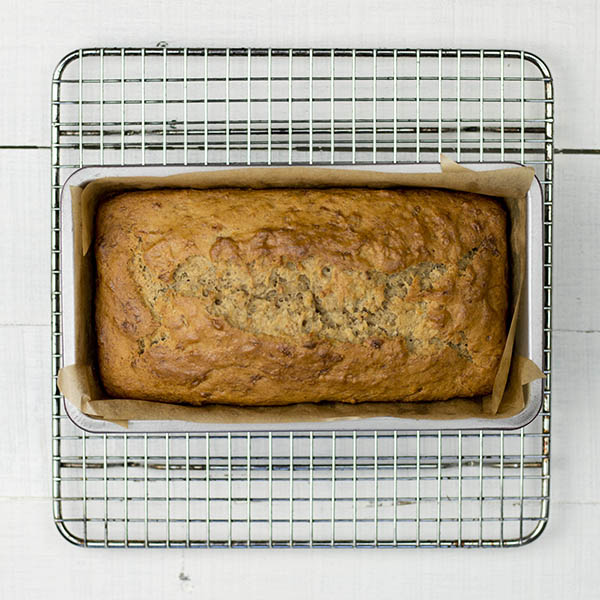
This cake is fantastic, especially when made with seasonal British plums which create a lovely decoration on top the cake. With ground almonds in the sponge, this cake has a lovely nutty flavour to it which is complemented by the sweetness of ripe plums.

We hope these tasty recipes inspire you to start making cakes with oil!
For more information on our brilliant cold pressed rapeseed oil, visit our Product page.
For stockists, visit our Where To Buy page.
For more recipe inspiration, visit our Recipe page.
Yes, of course you can make pastry without butter!
Shortcrust pastry is normally made with butter which can take a lot of time and effort as you need to slowly rub the butter into the flour. As well as time consuming, this can also get quite messy. As Mellow Yellow Rapeseed Oil has much less saturated fat than butter, we often encourage people to swap butter in cooking for Mellow Yellow, but pastry has always proved tricky. However, we decided to do a bit of recipe testing in the Mellow Yellow kitchen and see if we could create the perfect shortcrust pastry recipe using Mellow Yellow.
Eli got to work, changing quantities of oil, flour and water to achieve the perfect melt-in-the-mouth texture, not too crumbly and not too hard. After a few attempts, she had finally cracked it! We have created two pastry recipes; one is sweet for creating delicious fruit pies and galettes and a savoury recipe that is ideal for quiches and tarts. Eli’s method simply involves mixing Mellow Yellow Rapeseed Oil with flour until it comes together to form a breadcrumb-like texture. Next you pour in water and mix, the pastry will then come together into a ball. After resting in the fridge, your pastry is ready to be rolled out and used in your recipe!
As well as being super simple, by making pastry without butter, the pastry is now suitable for vegans or anyone that is dairy-free.
So if you would like to have a go at making pastry without butter, try our simple recipes below.
Savoury Pastry
This is our basic savoury pastry recipe. Using a mixture of wholemeal and white flour, we have created a fantastically versatile recipe that is perfect for quiches, tarts, pies and pasties. By adding wholemeal flour, this pastry isn’t too crumbly and has a delicious nutty flavour. Find the recipe here.
Use this pastry in:
Asparagus, Cheese and Egg Tartlets
Sweet Pastry
Our vegan sweet shortcrust pastry recipe uses plain flour to give a delicious crumbly texture with a touch of sweetness. Perfect for making simple fruit galettes, pies or tarts, this recipe is so easy that you’ll be able to make a batch of pastry in no time at all. You can find our recipe here.
Use this pastry in:
For more recipes using Mellow Yellow Rapeseed Oil, visit our Recipes page.
Cooking oils are a type of fat. Fat is a macronutrient (like protein and carbohydrate) that is made up of fatty acids. With so many different cooking oils available, most people don’t know which oil they should be using in their cooking for the healthiest results and often ask us what is the healthiest oil to cook with . This article will help to explain the different factors you should consider when choosing which oil to cook with.
What should we consider when looking at what is the healthiest oil to cook with?
When trying to decide which oil to cook with, we need to look at the following things. (We’ll explain each one a bit later on!)
– Saturated fat
– Unsaturated fat
– Trans fat
– Omega 3, 6 and 9
– Smoke point
– Vitamins and minerals found in the oil
What is fat?
Fat is a macronutrient (like protein and carbohydrate) and is made up of fatty acids. These fatty acids can be classified as saturated or unsaturated depending on their chemical structure. Unsaturated fatty acids include monounsaturated fatty acids and polyunsaturated fatty acids.
All fats provide 9 calories (kcal) per gram, regardless of the levels of saturated and unsaturated fatty acids, the big difference is the effect these fats have on your cholesterol levels so we need to ensure that we eat the healthiest fat we can.
Fat is a good source of energy and we need some fat in our diet to help us absorb the fat soluble vitamins A, D, E and K.
Within the body, fatty acids form part of our cell membranes and fat also helps to insulate and protect our internal organs, contributing towards maintaining our body temperature and is involved in lots of body processes such as the development of our brains and the communications which occur between different cells. Cholesterol is needed to produce bile acids, which help us to digest food, and also some of our hormones.
What is Saturated Fat?
Saturated fat is found in foods such as fatty meats, hard cheese and butter.
High intakes of saturated fat have been shown to raise levels of ‘bad’ (LDL – Low Density Lipoproteins) cholesterol in the blood. High blood cholesterol increases the risk of developing heart disease and stroke by building up in our arteries, causing them to narrow. It is best to eat foods that contain less saturated fat.
An easy way to tell if your oil contains high levels of saturated fat is whether it is solid at room temperature, if it is, it most likely contains a high amount of saturated fat.
Chemically speaking, saturated fats have don’t have any double bonds between their carbon atoms in the fatty acid chain.
What is Unsaturated Fat?
Often called ‘good fat’, unsaturated fat help to maintain a healthy cholesterol level and have even been known to help lower levels of harmful cholesterol. Unsaturated fats are either monounsaturated or polyunsaturated.
Our bodies are able to make most of the specific fatty acids we need apart from two polyunsaturated fatty acids which we must get from our diet. These two fatty acids are alpha linolenic acid (an omega 3 polyunsaturated fatty acid) and linoleic acid (an omega 6 polyunsaturated fatty acid). Our bodies need these for brain development, growth and for a healthy immune system.
Omega 3 and 6 are called essential fatty acids as we need to obtain small amounts of them from our diet. Alpha linolenic acid is found in rapeseed, walnut and soya oils and spreads made from these. Linoleic is also found in plant based oils such as sunflower, corn, peanut, rapeseed, olive, safflower, sesame, walnut and soya oil and spreads made from these. Both of the essential fatty acids are present in smaller amounts in foods such as meat, eggs and oily fish. Ideally our bodies need Omega 3 and Omega 6 in the right balance of one part Omega 3 to every two parts Omega 6.
What about Trans Fat?
These are the worst types of fat and should be avoided wherever possible as they have been known to increase blood cholesterol levels. Typically, foods with hydrogenated oils likely contain trans fats, such as fried foods, takeaways and hard margarines.
As you can see, the levels of saturated and unsaturated fat in your cooking oil is very important. We have broken down the most common oils in the simple table below for you.
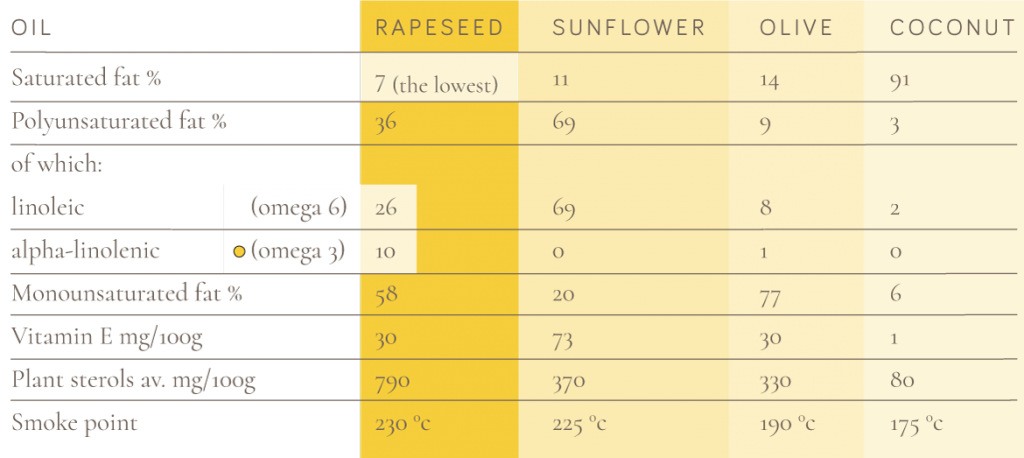
* Ideal balance of Omega 3 to Omega 6.
Does Smoke Point matter?
Other than the levels of different fats in your oil, if you are cooking with oil, you need to ensure that the smoke point is suitable. It can be dangerous to take an oil over its smoke point as this can cause the chemical structure to break down, which is why we always recommend cold pressed rapeseed oil for high temperature cooking as it has a smoke point of 230°C.
Are Vitamins and minerals found in oil?
Some oils, especially those that are cold pressed, can contain naturally occurring vitamins and minerals. Plant sterols can also be found in some oils, learn more about these in our blog post.
Cold pressed rapeseed oil contains vitamin E, vitamin K and catotenoids including provitamin A. Vitamin E is an important antioxidant and vitamin K is needed for efficient blood clotting. Provitamin A is essential for healthy skin, eyesight, growth and reproduction and, carotenoids contain luteins which are an antioxidant and give the oil its distinctive yellow colour.
So what is the healthiest oil to cook with?
We want an oil with low saturated fat, high unsaturated fat (including both polyunsaturated and monounsaturated), a high smoke point and containing as many other vitamins and minerals as possible.
The obvious choice has to be cold pressed rapeseed oil (but we would say that, wouldn’t we!) From the table, we can see that cold pressed rapeseed oil has the lowest saturated fat levels, a good balance of both types of unsaturated fat, a high smoke point and also contains vitamin E and plant sterols.

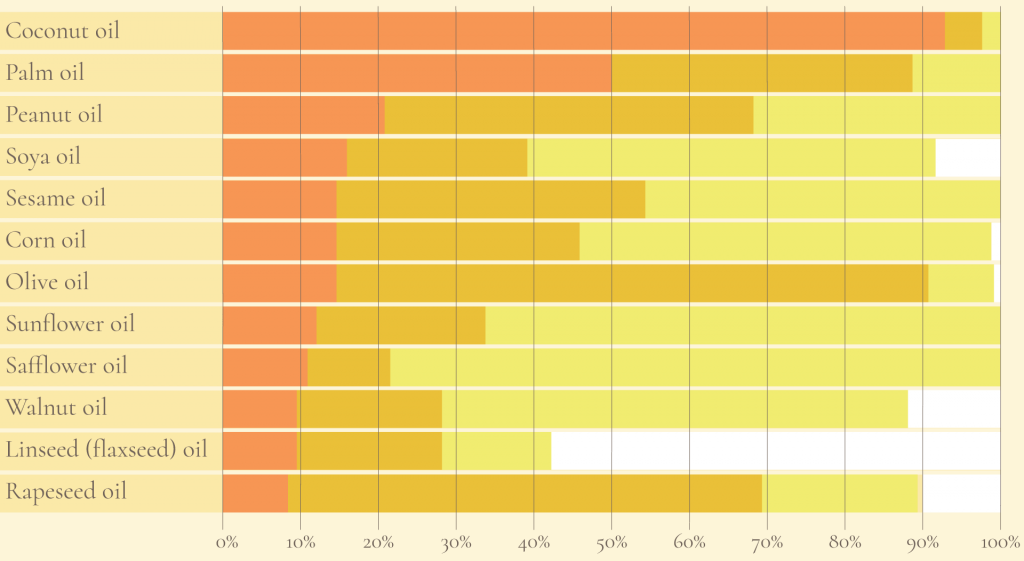
All oils contain a mixture of unsaturated fat and saturated fat and the healthiest ones to use are those with the lowest saturated fat and highest unsaturated fat.
So, if you’re asked what is the healthiest oil to cook with, you now know that you want an oil with a low saturated fat content and high in unsaturated fat. Cold pressed rapeseed oil is ideal, find out more here and find stockists here.
Not just used by home cooks, our Mellow Yellow Cold Pressed Rapeseed Oil has made it’s way into many professional kitchens. Dean Hoddle, Head Chef of Silverstone Race Circuit here in Northamptonshire, tells us all about how he uses our oil to create delicious dishes…
As the Head Chef of Silverstone Circuit my dedicated team of chefs and I have to deliver a multitude of culinary offers for various events around the circuit. Whether it be a sandwich working lunch for an intimate meeting; a buffet style menu for a large trade exhibition, a banquet style meal for a FSTE 100 company or race day hospitality for the UK’s most prestigious motorsport events. Each event presents its unique challenges but it is overcoming these particular challenges that my team and I especially relish.
One of the main challenges we face is creating a balanced menu that is applicable to so many diverse events; often with large numbers and an ever varied number of diets. This is never easy to undertake and with my passion for local produce I often find myself looking closer to home for the finest produce to use on the menu.
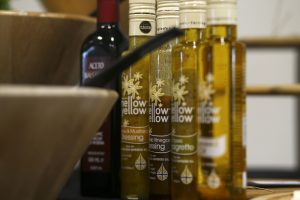
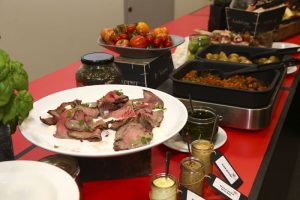
In Northamptonshire we are truly blessed with excellent local produce and food loving artisan producers. Getting to know them and just talking about their produce you can see the passion that goes into the products they produce. Once we get to know them and build a relationship with them, the sky is the limit. I often find myself talking to them discussing new product ideas, then, hey presto, we have an exclusive product concept which ends up being a bespoke product exclusive to Silverstone. You don’t get that often as a Head Chef anymore.
With Farrington Oils the fact they are in the rolling countryside of Northamptonshire is a real bonus. The soil is perfect rapeseed growing conditions and the fields around the county are often ablaze with a sea of yellow. Deep within the countryside down a single lane country road in a sleepy village you come across Farrington Oils. The sea of yellow around the farm, the grain stores, the production area and the development kitchen: you just can’t help yourself but be excited. It sounds idyllic and it certainly is but it’s not just about the look and feel of where you are. What they produce is also special.
Let’s start with the oil. The unmistakable look of the golden colour and smooth taste makes this product a pure joy to work with. It’s so versatile we can apply it to any dish that you would use other oils in and simply get a far better result. The smooth undertone of flavour comes through to give you a distinct yet subtle flavour which enhances the produce.
From this base product Farrington Oils make a selection of dressings which are on all of our menus from Corporate Hospitality events to the biggest event on the Silverstone calendar: the British Grand Prix. The selection of flavours really complement our dishes and the design on the bottles with the brand “Mellow Yellow” which is recognised as quality, is simply placed on the service points to add to the luxury of our offering.
When you add all this together: the fantastic service which is very personal; the ability to create new ideas and the amazing base product you simply cannot lose. I’m looking forward to my next visit to Farrington Oils where my chefs and I will be playing in the development kitchen looking onto the yellow fields for inspiration.
Dean Hoddle, Head Chef, Silverstone
Follow Dean on Twitter & Instagram.
We’re so excited to share our eagerly awaited, wonderful new dressing with you! Introducing Mellow Yellow Chilli and Cumin Dressing …
Aromatic and lively, combining the heat of chilli with the gentle aroma of cumin. A deliciously daring dressing or marvellous marinade.
For our first new dressing in four years, we wanted to create something bold and full of flavour. The flavours of chilli and cumin fit the bill perfectly! The chilli flavour is subtle enough to add a pleasant heat to your cooking with a delicious aromatic base from the cumin seeds. Not just for salads, use this dressing as a marinade for salmon, BBQ’s prawns, roasted vegetables or even in a simple butter bean hummus! We absolutely love the combination of spice and fragrance, adding a fantastic flavour to even the simplest of salads.
Just like every product in the Mellow Yellow range, our Chilli and Cumin Dressing is made with the finest ingredients. With no additives or preservatives, it is also vegan and gluten free. Thanks to our Mellow Yellow cold pressed rapeseed oil, the dressing is rich in Omega 3 and low in saturated fat so you know you are using a good quality dressing that’s also good for your health.
How can I get a bottle?
Available now from farm shops, delis and food halls. Make sure to ask your local farm shop to stock Mellow Yellow Chilli and Cumin Dressing if they don’t already! Once you’ve picked up your bottle, we’d love to know your favourite recipe, so make sure to tag us on Facebook, Twitter or Instagram.
Take a look at our other salad dressings too: Honey & Mustard, Classic Vinaigrette & Balsamic Dressing
In May this year, when our rapeseed fields were looking their best in full bloom, Nadiya Hussain and a filming crew from Hungry Gap Productions came to Bottom Farm to learn more about how we produce our cold pressed rapeseed oil. The reason for the visit was to film a segment for Nadiya’s new series, Nadiya’s Family Favourites!
Starting in the fields, Duncan explained how he grows the rapeseed to LEAF (Linking Environment and Farming) Marque standards and how the plant grows. He then showed Nadiya the cold pressing method we use and how we bottle our oil.
As Nadiya is obviously a brilliant baker and chef (she won the Great British Bake Off in 2015) she was keen to learn more about cooking with Mellow Yellow Cold Pressed Rapeseed Oil! So she headed off to The Mermaid in Ellington and head chef, Nick Marriot put her taste buds to the test with a roast potato challenge. After cooking roast potatoes in either cold pressed rapeseed oil, sunflower oil or olive oil, Nick challenged Nadiya to identify each oil. With it’s high smoke point giving super crispy roasties and subtle nutty flavour, she easily spotted the ones cooked in Mellow Yellow!
We absolutely loved having Nadiya visit us at Bottom Farm, it was a fantastic day and watching ourselves on TV is incredibly exciting! If you didn’t catch the episode live last week, you can catch up on BBC iPlayer now: https://www.bbc.co.uk/iplayer/episode/b0bc26qk/nadiyas-family-favourites-series-1-1-family-days-out
Nadiya’s Family Favourites is on BBC2 every Monday at 8pm.
Now that the weather is warming up, it is the perfect time to start making salad dressings with cold pressed rapeseed oil. With half the saturated fat of olive oil and ten times the Omega 3 of olive oil, cold pressed rapeseed oil is a fantastic choice for creating healthy salad dressings. Not only healthier, Mellow Yellow Cold Pressed Rapeseed Oil has a very subtle nutty flavour with buttery undertones, a fantastic flavour profile for creating delicious salad dressings. As we grow, press and bottle our rapeseed oil on our farm in Northamptonshire to LEAF Marque standards, you can rest assured that you are using a high quality, environmentally responsible British product.
Now that we know how great the oil is, here are some recipes for salad dressings with cold pressed rapeseed oil…
Blackberry Vinegar Dressing
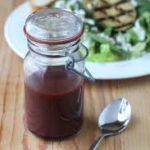
Ingredients:
1tsp Dijon mustard
1tbsp blackberry vinegar (we like Scrubby Oak or you can make your own with our simple recipe below)
3tbsp Farrington’s Mellow Yellow Rapeseed Oil
Method:
Mix the blackberry vinegar and dijon mustard in a screw top jar, then put the lid on and shake well. Add the Mellow Yellow (put the lid on again!) and shake vigorously again to get it all thoroughly blended. Adjust seasoning to taste. Store in the fridge and enjoy.
For the Blackberry Vinegar, steep blackberries with an equal quantity of cider vinegar for 5-10 days. After this time, strain the liquid and boil for 8-10 minutes with 450g of sugar per 700ml of liquid.
Sweet Oriental Dressing
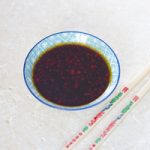
Ingredients:
1tbsp runny honey
½ chopped red chilli
1 tbsp dark soy sauce
1 tbsp Mellow Yellow Rapeseed Oil
Method:
Combine the runny honey, chopped chilli, dark soy sauce and Mellow Yellow Rapeseed Oil. Stir vigorously until combined.
Did you know that we make our own range of salad dressings?
– Honey & Mustard Dressing – Superbly balanced sweetness with a fantastic bite. Use on anything from a salad to a sausage. Try Honey & Mustard on our Asparagus, Salmon and Avocado Bruschetta as a tasty lunch or light dinner, the salmon and avocado perfectly complement the sweet and sharp flavour from honey and mustard.
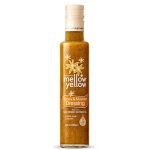
– Classic Vinaigrette – The ultimate salad dressing with a sharp tangy taste, perfect for a green salad. Try Classic Vinaigrette in this recipe for a Protein Power Pot with quinoa, watercress, egg and tuna for a filling lunch recipe ideal for taking to work.
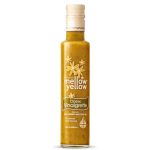
– Balsamic Dressing – A modern British twist on the classic Italian dressing, made with Aspall’s Apple Balsamic Vinegar for a deliciously fruity flavour. This dressing is perfect with Tomato, Basil and Mozzarella to highlight the delicious Italian flavour of the balsamic.
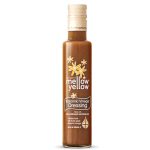
Find more salad recipes on the Recipe section of our website.
Duncan Farrington takes a closer look at what are fats, the different types of fats and clears up some of the confusion surrounding them:
We often hear contradicting messages about what we should and should not eat in our diets, we are told some foods are ‘good’ and others are definitely ‘bad’. It is confusing and frustrating sometimes not knowing what to do for the best. I really believe in keeping things simple when it comes to eating a healthy diet, plus being honest with myself in the choices I make. For example, I personally enjoy spending an evening with friends over a couple of beers, but if I was to do this every evening of the week, over time it would lead to unhealthy consequences. The choice is mine.
What are fats?
In our diet, we need the right balance of macro and micro nutrients. Macro nutrients are the main food groups of carbohydrate, protein and fat. If we eat a balance of the three macro nutrients, preferably in as broader range of different foods as possible and ideally in a non-processed diet, we will also get all the micro nutrients of minerals and vitamins needed in our diet too.
As a very simple rule of thumb, a healthy diet consists of plenty of fruit and vegetables, plus around a third of our daily food intake coming from each of the main food groups – carbohydrate, protein and fat.
![]() Carbohydrates are found in foods such as cereals and rice, bread, potatoes, pasta, sugar.
Carbohydrates are found in foods such as cereals and rice, bread, potatoes, pasta, sugar.
![]() Proteins are found in meats, fish, pulses.
Proteins are found in meats, fish, pulses.
![]() Fats are found in cooking oils, fats and nuts.
Fats are found in cooking oils, fats and nuts.
It can become more confusing when we consider that most foods contain a mixture of the different food groups. For example, milk and dairy foods contain carbohydrates, proteins and fats as well as important vitamins and minerals. Fruits are a great source of minerals and fibre, but also contain carbohydrates (sugars). Eggs have both protein and fat. However foods such as biscuits and cakes are equally high in fat and sugar.
Fat is a crucial part of our diet, it is the most efficient source of energy, it helps our bodies absorb fat soluble vitamins, such as vitamins A,D,E and K. Fats play crucial roles within our bodies from cell membrane formation, to the development of our brain and even communication between different cells. They also insulate organs and contribute towards maintaining body temperature.
Like other food groups, fats are also complex, they are formed from fatty acids and can be split into three main types; Saturated, Poly-unsaturated and Mono-unsaturated. These terms are simply a description of the molecular make up of the particular fatty acid in ratio of the carbon to hydrogen atoms and how they are bonded together. Don’t worry about the chemistry – I struggle with it myself. However, just as we need a balance of macro nutrients in our diets, we also need a balance of the different fats, with around an equal split between saturated, poly-unsaturated and mono-unsaturated fats being a simple rule of thumb.
The much-heralded Mediterranean diet is shown as an example of healthy eating, where the population had much lower cases of heart disease compared with northern European populations. The Mediterranean diet is low in saturated fat, mainly comprising of olive oil, oily fish which contains poly-unsaturated fats and plenty of fruit and vegetables. This compared with a traditional northern European diet which is high in saturated fat, mainly from animal fats and not enough fruit and vegetables. It is important to recognise that the total fat consumed in the two diets was similar, it was just that one was in the right balance, where the other was not.
An easy way to recognise a saturated fat is that it is solid at room temperature, only becoming liquid once it is heated. Over the years, successful health messages have resulted in greater awareness of the need to reduce our saturated fat intake in Britain, which has been largely successful. We now eat less fatty meat and more sources of plant-based fats.
Oily fish is an important part of the Mediterranean diet because it is a good source of poly-unsaturated fatty acids. Poly-unsaturated fatty acids play vital roles in the reduction of cholesterol in our bodies as well as being crucial for healthy brain and eye development. They are often called essential fatty acids, as the body can only get them in the diet and can not make them internally. These fats can also be found in certain nuts and seeds such as rapeseed, sunflower seed or peanuts. As nutritionists became aware of the need and role of poly-unsaturated fats in the diet following World War II, food companies developed non-dairy spreads to replace butter which has a higher saturated fat content with ‘healthier’ alternatives such as sunflower or corn oil, these have less saturated fat and higher poly-unsaturated fats. However, over the years, knowledge and learning about these complex fatty acids increased, to discover that poly-unsaturated fats are also made up of different types which can be broadly categorised in to Omega 3 and Omega 6. Not only did scientists discover the different types of poly-unsaturated fats, they also discovered that bodies need to consume these in an ideal balance of around two parts of Omega 6 for every one part of Omega 3.
With this new-found knowledge, it was also realised that the oils traditionally used to make non-dairy spread, were good sources of Omega 6, but had little or no Omega 3. Additionally, people who eat a high proportion of processed foods, much of it using sunflower, corn or palm oils for example, were in fact eating an unhealthy ratio of Omega 6 to Omega 3 of up to 20 times to 1, compared to the ideal of 2 to 1, causing other bad health issues in our diet. Some responsible food manufacturers have recognised this problem and have replaced such unbalanced fats with better options. A good example is a leading brand of non-dairy spread which used to be made with sunflower oil, which had the strap line in advertising campaigns in the 1980’s about it being ‘high in poly-unsaturates’, even though sunflower oil has no omega 3. The recipe was completely changed to replace sunflower oil with rapeseed oil, which has the perfect balance of poly-unsaturated fats in a ratio of 2.6g of Omega 6 for every 1g of Omega 3.
The final type of fat we need in our diet is mono-unsaturated. Mono-unsaturated fats are found in plant foods such as nuts and seeds, with olive oil and rapeseed oil being rich sources of these fats, as well as avocados for example.
For more information on what are fats and the role of fats in our diet, look at https://www.farrington-oils.co.uk/interesting-oil/ which also includes three excellent articles form the British Nutrition Foundation.
As I said at the start, information and advice can be confusing and frustrating, but for my part I stick to my own rules of:
![]() Eat a well-balanced diet, around a third each of carbohydrate, protein and fat
Eat a well-balanced diet, around a third each of carbohydrate, protein and fat
![]() The broader the diet of different foods and meals I enjoy, the better
The broader the diet of different foods and meals I enjoy, the better
![]() Eat a well-balanced diet of the different fats
Eat a well-balanced diet of the different fats
![]() ‘Good’ and ‘Bad’ foods don’t really exist, it is just the quantity of each that makes a difference
‘Good’ and ‘Bad’ foods don’t really exist, it is just the quantity of each that makes a difference
![]() Be honest with yourself – I know what treats to enjoy sparingly and what I should eat more of. More cabbage, less biscuits!
Be honest with yourself – I know what treats to enjoy sparingly and what I should eat more of. More cabbage, less biscuits!
For more information, The British Nutrition Foundation has written independent articles for us on The Importance of Fats, Introduction to Healthy Fats and A Comparison of Different Culinary Oils.
We all know that food waste is a growing problem. In 2016, British shoppers threw away a shocking 160 million bananas! Alhough they may be the countries favourite fruit to snack on, they are also the most wasted. Unfortunately, 1 in 3 people will throw away a banana if it has a bruise or even a single black mark on its skin. It really is bananas!
Here at Farrington’s, we think that one of the best ways to cut down food waste is to shout about all the amazing recipes that you can use these ingredients in, rather than throwing them away. So, here are our Top 5 Leftover Banana Recipes…
If you’re not ready to make any of these recipes straight away, just peel and slice your bananas, and then freeze them in a Tupperware box or freezer bag. Once in slices, the frozen bananas are perfect for smoothies or any of our other recipes. You’ll have banana ready to go in your freezer for whenever you fancy making one of these recipes!
Banana Bread – The original way to use up bananas. Banana bread is a regular in the Mellow Yellow kitchen as it is such a simple cake to bake and gives truly delicious results! We have two well loved recipes, click here for our traditional recipe and here for our vegan alternative!

Banana Ice-Cream – Freeze bananas as they go past the point you would like to eat them. Cut the frozen bananas into a food processor and add 1 generous tablespoon of vanilla yogurt (or any other type of dairy like quark, double cream, forage frais) per banana. Blitz until smooth. Each banana creates two scoops of ice cream. Serve immediately. (Preferably with warm brownies.)
Vegan Pancakes – If you want to try vegan pancakes, ripe bananas are perfect. Simply mash 1 banana and whisk together with 150ml coconut milk (or any other milk alternative you like), 100g plain flour and ½ tsp baking powder. This mixture is meant to be pourable so if it’s too thick just add a splash more milk, or if too runny add another spoonful of flour. Heat up some Mellow Yellow Rapeseed Oil in a frying pan and dollop large tablespoons of your mixture in to cook. Cook each pancake for 2-3 minutes, flipping when bubbles begin to appear on top, then cook for a further 2 minutes. Serve your pancakes in a big stack with your choice of sauce drizzled over.
Carrot and Banana Cake – Our oldest and most loved cake recipe. So easy, delicious and freezes well – a total favourite. The carrot and banana cake is a great afternoon tea sweet choice and a fantastic way to cut down on your food waste by using bananas rather than throwing them away. Find the recipe here.
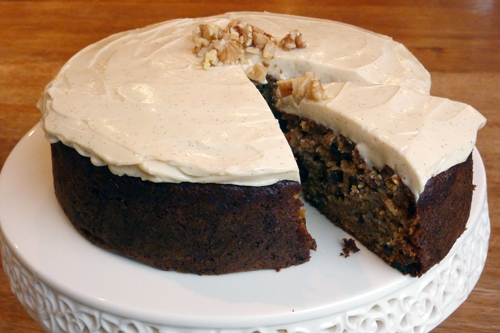
Smoothies – Overripe or frozen bananas are perfect for smoothies! Simply add them to your blender with any other fruit, milk or yogurt you have and after a a quick blitz, you’ll have a delicious and filling breakfast smoothie!

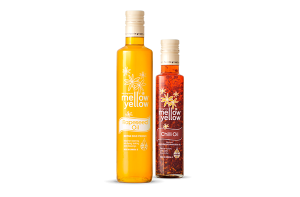 Oils
Oils Rapeseed Oil
Rapeseed Oil Chili Oil
Chili Oil Dressings
Dressings Classic Vinaigrette
Classic Vinaigrette Balsamic Dressing
Balsamic Dressing Honey & Mustard
Honey & Mustard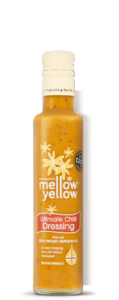 Ultimate Chilli Dressing
Ultimate Chilli Dressing